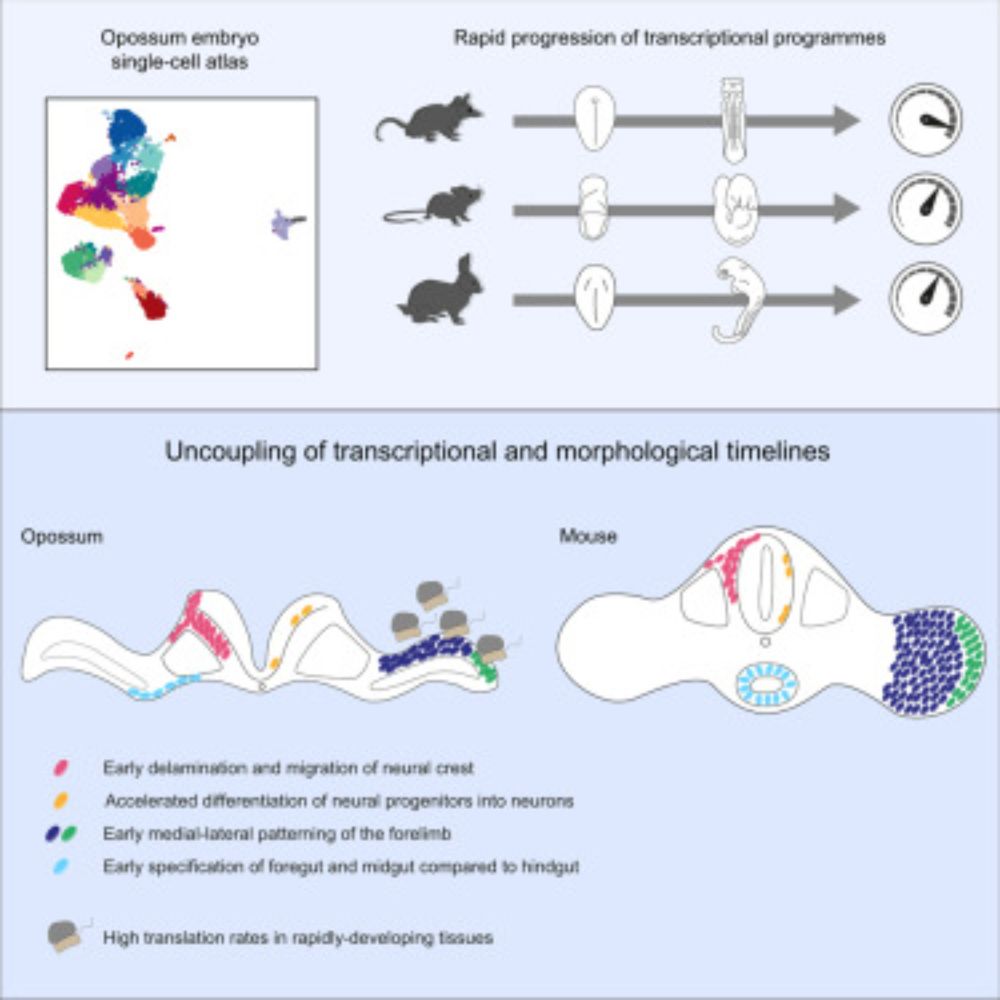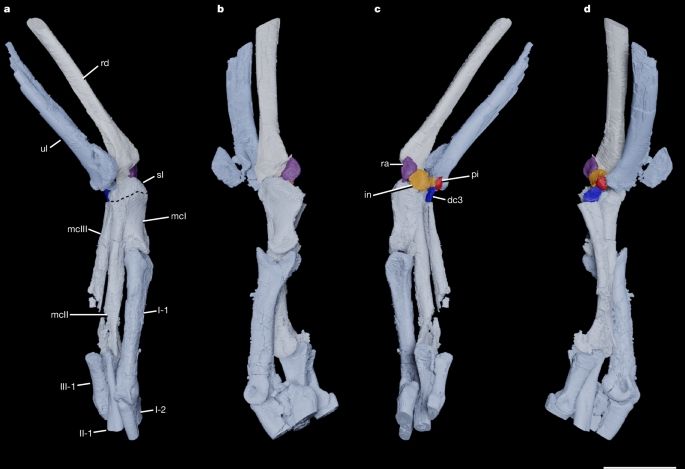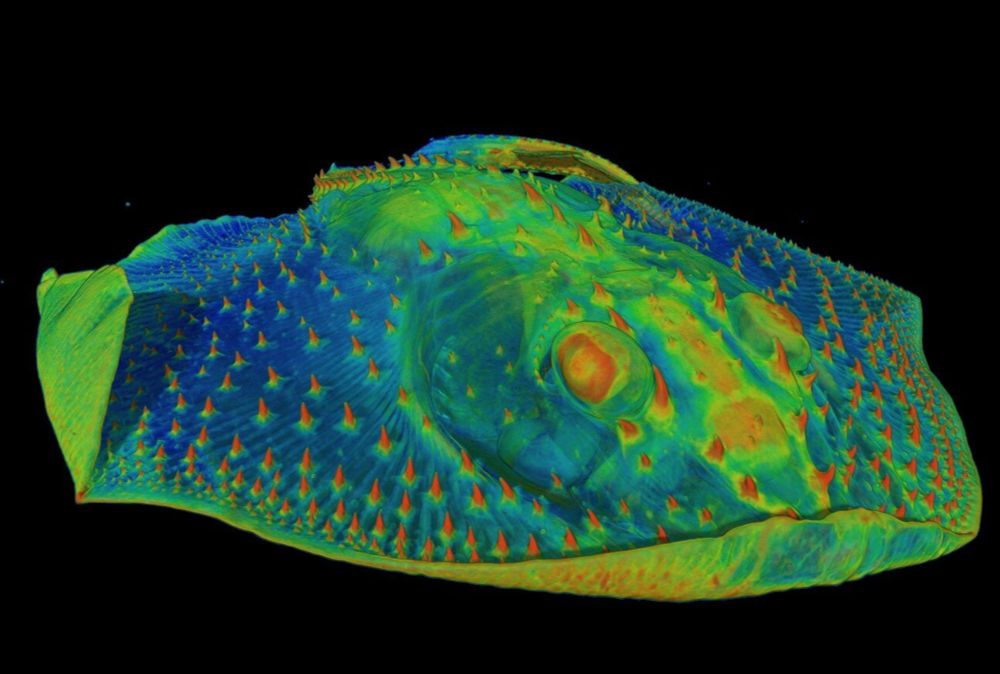
Electroreception in treehoppers: How extreme morphologies can increase electrical sensitivity | PNAS
The link between form and function of an organism’s morphology is usually apparent
or intuitive. However, some clades of organisms show remarkable ...
Why do treehoppers look so weird?! Our latest paper, out this week in @pnas.org, suggests a perhaps unexpected reason - static electricity ⚡ We show that treehoppers can detect the electrostatic cues of predators and that their crazy shapes may boost their electrosensitivity! doi.org/10.1073/pnas...
24.07.2025 11:41 — 👍 406 🔁 166 💬 12 📌 41

New paper in @nature.com! With @kiseokmicro.bsky.social , Siqi Liu, Kyle Crocker, Jojo Wang, Mikhail Tikhonov & Madhav Mani — a massive dataset and simple model reveal a few conserved regimes that capture how soil microbiome metabolism responds to perturbations. www.nature.com/articles/s41...
17.07.2025 06:36 — 👍 56 🔁 28 💬 1 📌 3
1/n 🧵 Excited to share our new paper! We developed a framework to reveal hidden simplicity in how organisms adapt to different environments, particularly focusing on antibiotic resistance evolution. #EvolutionaryBiology #MachineLearning
15.05.2025 14:33 — 👍 37 🔁 22 💬 1 📌 1
Got the opportunity to write a `behind the paper' story for @the-node.bsky.social about our work on the evolution of synovial joints, and I thoroughly enjoyed the experience.
Here it is, for some leisure reading:
06.05.2025 13:55 — 👍 7 🔁 1 💬 0 📌 0
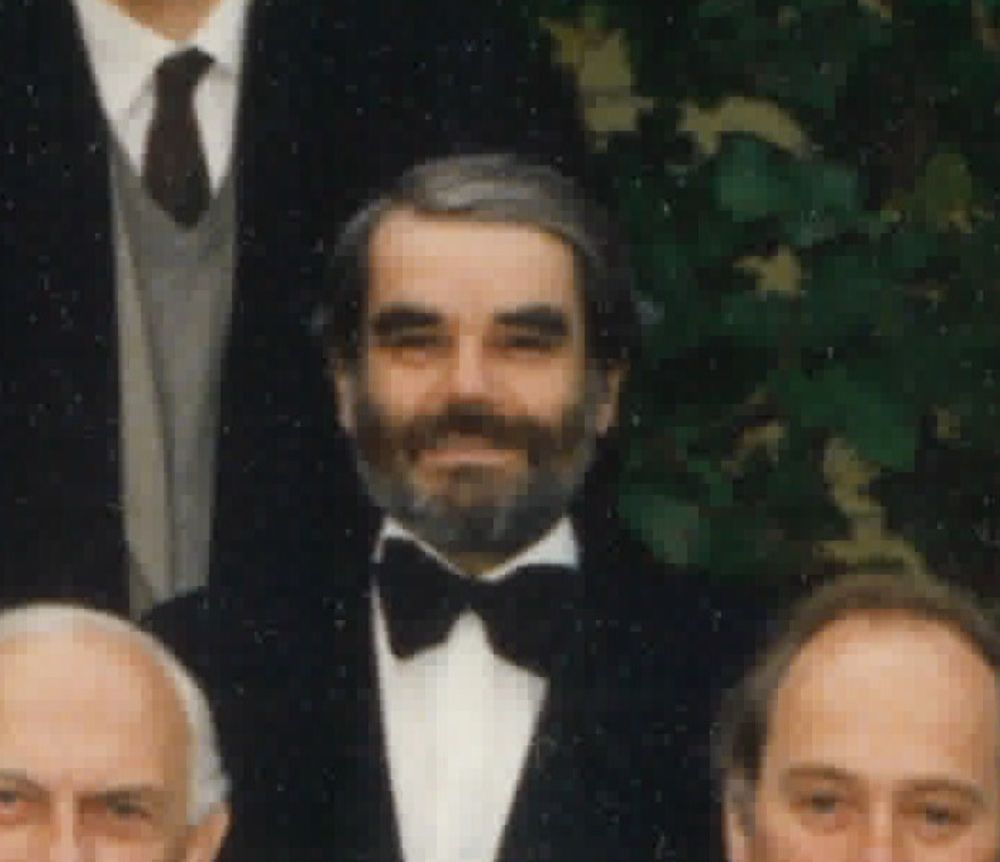
Dr Henry Bennet-Clark (1934–2025) - St Catherine's College
Dr Henry Bennet-Clark (1934–2025) St Catherine’s College is deeply saddened to announce the passing of Dr Henry Bennet-Clark, Emeritus Reader...
The incredible Henry Bennet-Clark passed away recently, but his wonderful science will continue to inspire.
www.stcatz.ox.ac.uk/dr-henry-ben...
He wrote numerous amazing papers, including on how fleas jump so high:
scholar.google.com/scholar?q=au...
#biomechanics #obituary #stcatz
04.03.2025 13:06 — 👍 2 🔁 2 💬 0 📌 0
Started from ontogenetic and molecular studies of living lineages, authors found reciprocally cavitated joints in placoderms. Placoderms can move pectoral fins very smoothly!! Congrats @neelimasharma.bsky.social @neilshubin.bsky.social Yara Haridy! #Teamfish #evodevo
27.02.2025 22:21 — 👍 3 🔁 1 💬 0 📌 0
Very grateful for your kind mention, Roli! Thank you for working with us :)
Synovial joints are truly striking and one of the examples of evolutionary engineering at its peak.
27.02.2025 14:29 — 👍 1 🔁 0 💬 0 📌 0
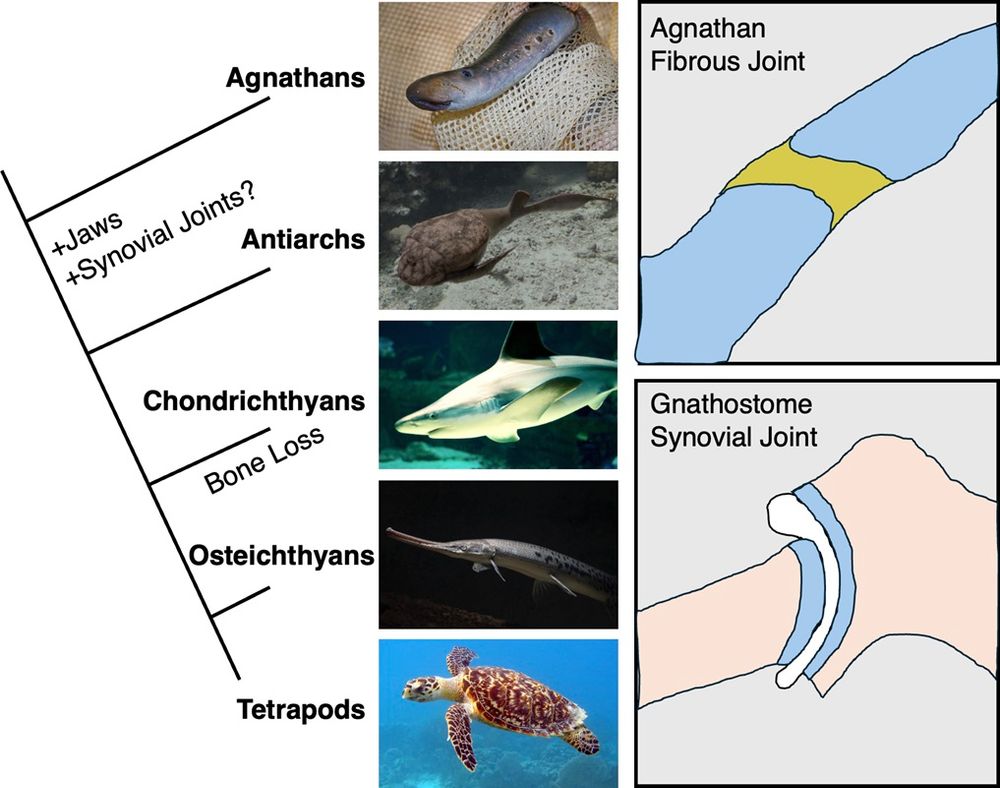
Left: A phylogeny of chordates, flanked by images of a lamprey, a placoderm, a brown shark, a longnose gar and a hawksbill turtle. Agnathans such as lampreys lack synovial joints. The first putative evidence of synovial joints in the fossil record is in early gnathostomes such as the antiarch placoderm fish that lived during the Silurian and Devonian periods. Modern gnathostomes such as cartilaginous fishes (i.e., chondrichthyans such as the brown shark), bony fishes (i.e., osteichthyans such as the longnose gar), and limbed vertebrates (i.e., tetrapods such as the Hawksbill turtle) possess synovial joints in their jaws, fins/limbs, and other locations. All images used are freely available without copyright restrictions. Top right: a typical agnathan joint is shown where glycosaminoglycans and proteoglycans are uniformly distributed across the cartilages (blue) that are connected by fibrous tissue (olive). Bottom right: a typical gnathostome synovial joint is shown where surface cartilage has a unique proteoglycan composition from the underlying cartilage and bone, and a fluid-filled cavity separates adjacent skeletal elements.
When did the lubricated joints that allow our skeleton to swivel, rotate and bend evolve? @crumplab.bsky.social explores a new @plosbiology.org paper by @neelimasharma.bsky.social &co that pinpoints their origin to the earliest jawed vertebrates 🧪 Paper: plos.io/3CTC8La Primer: plos.io/4kkhXa6
26.02.2025 19:38 — 👍 40 🔁 11 💬 0 📌 3
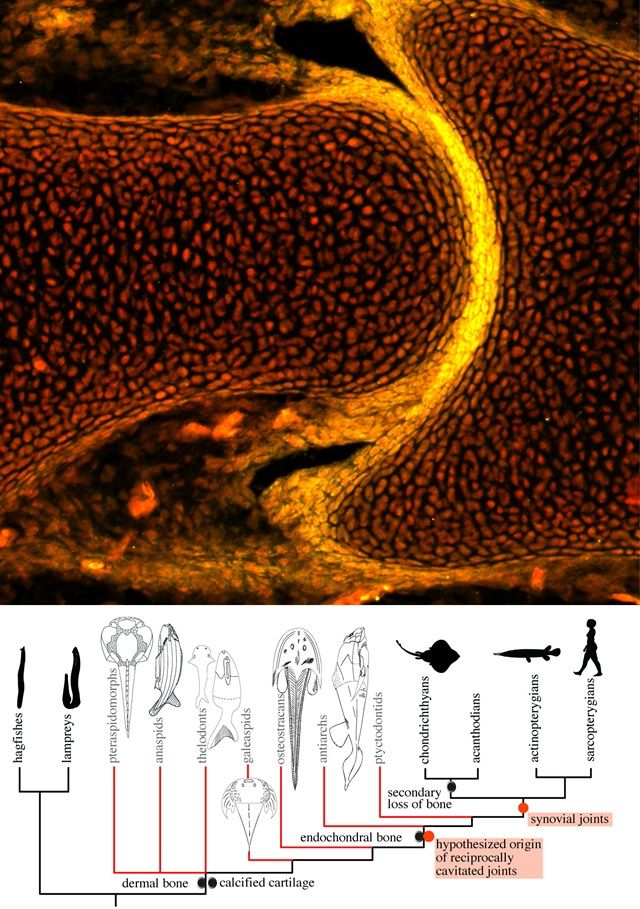
Top: Immunostaining reveals aggrecan (yellow) at the articular surfaces in the pelvic joint of an embryonic little skate (stage 33). The nucleus is stained using DAPI and is shown in red. Bottom: Phylogenetic tree adapted from Donoghue and Keating, annotated to show that synovial joints exist in extant jawed vertebrates (gnathostomes), but the study’s results do not support their existence in cyclostomes. The presence of reciprocally shaped and cavitated joints in the dermal skeleton of antiarchs suggests that joints that function by relative sliding (similar to synovial joints) first originated in stem gnathostomes.
When did synovial joints evolve? @neelimasharma.bsky.social @neilshubin.bsky.social &co reveal that stable, mobile & lubricated joints were present in the common ancestor of jawed fishes but lacking in jawless ones 🧪 @plosbiology.org plos.io/3CTC8La
25.02.2025 19:09 — 👍 63 🔁 21 💬 0 📌 3
New paper led by @neelimasharma.bsky.social on the lab! The evolutionary origin of highly mobile joints!
25.02.2025 19:16 — 👍 65 🔁 12 💬 0 📌 0
I'm a researcher at the Royal Vet College interested in biomechanics, motor control, frogs, music & art
Your Only Source For Professional Dog Ratings
nonprofit: @15outof10.org ❤️🩹
links.weratedogs.com
PhD Student at the University of Augsburg - Theoretical Physics "Mesoscopic Physics of Life"
@m-pol.bsky.social
https://www.linkedin.com/in/ss-gomez/
Interested in #physics of life. Theorist but some of my best friends are experimentalists.
Manning Research Group at Syracuse University: theory and computation focused on cells, grains, tissues, glasses, and other out-of-equilibrium disordered matter
Research interests = skeletal development, biomineralisation, morphological evolution and all things evo-devo
Evolution of developmental processes.
Associate Professor @OxfordBiology & Fellow @JesusOxford.
@SteventonLab, @CRGenomica & #embryo17 alumna.
Working mother.
Postdoc at @crick.ac.uk | HFSP fellow | DevBio, epigenetics, marsupial, evo-devo | Previous Manzanares lab | #embryo2017 | (he/him)
Welcome to our official page. Sharing the latest news, research and highlights of life at UCL (University College London).
London's Global University - ucl.ac.uk
Curator, fossil reptiles, at Natural History Museum London. Honorary positions at UCL and University of Adelaide. #tuatara He/Him 🦎 #Cymraeg
Orcid: 0000-0002-0146-9623
#interdisciplinary Science project - A*MIDEX (AMU)
@cnrs.bsky.social
Inserm
Centrale Marseille
ANR
- #Research #Education #Engineering
Interested in how cells use genes to create shape, form and function in #embryos as well as in Societal Wellbeing
#NotInTheGenes #InNumbersWeTrust #gastruloids #gastrulation
Fiction. Poetry. Nonfiction.
Memoir: Something in the Woods Loves You - Timber Press Sept 2024
New Fantasy Novel: Strange Animals - Ballantine Books Feb 2026
Poetry: The Haunted Forest Trilogy
Podcast: The Cryptonaturalist
https://linktr.ee/jarodkanderson
Postdoc @ Stanford | Schmidt Science Fellow ’21 | Biophysics & Evolution | Bayes Theorem Advocate | Proudly Mexicano 🇲🇽
MSCA DSTrain Postdoc @biovitenskap.bsky.social | Guest researcher @UGent | Conservation photojournalist | Researching function & evolution of vertebrates colored integument | https://www.jonathangoldenberg.com
Account for Oxford's Mathematical Observatory. Posts by Dominic Vella
PhD candidate | AHA Predoc Fellow | Grad student rep at Flyboard | Studying brain metabolism and development in the Tennessen Lab at IU Bloomington | She is into dancing and Drosophila 💃🏽🎶🎙️👩🏽🔬🔬
#SciComm & community engagement | PhD @theCrick | she/her | Views my own
Can also be found running, playing the violin or baking sourdough bread
Authoritative quotation information. Book: Hemingway Didn't Say That. Website receives 4.5 million visitors/year.
https://quoteinvestigator.com/about/

